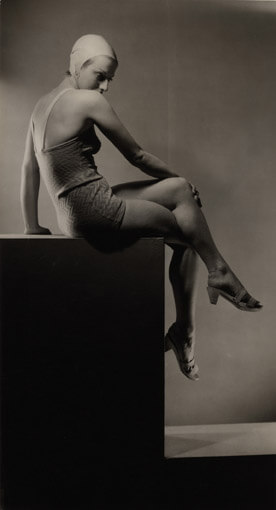
Ville de Chalon-sur-Saône.
Laure Albin Guillot (1879–1962), The Question of Classicism
Musée de l'Elysée, Lausanne
From 04 June to 25 August 2013
Extramural
Laure Albin Guillot (Paris, 1879–1962), a “resounding name that should become famous”, one could read just after World War II. Indeed, the French photographic scene in the middle of the century was particularly marked by the signature and aura of this artist, who during her lifetime was certainly the most exhibited and recognized, not only for her talent and virtuosity but also for her professional engagement.
Organised in four parts, the exhibition, “Laure Albin Guillot: The Question of Classicism” allows one to discover her art of portraiture and the nude, her active role in the advertising world, her printed work and, at last, a significant gathering of her “micrographies décoratives”, stupefying photographs of microscopic preparations that made her renown in 1931.
The exhibition organised by the Jeu de Paume gathers a significant collection of 200 original prints
and books by Laure Albin Guillot, as well as magazines and documents of the period from public and private collections, such as the Parisienne de Photographie, the Musée National d’Art Moderne, the Bibliothèque Nationale de France, the Musée Nicéphore Niépce (Chalon-sur-Saône) and the Musée Français de la Photographie (Bièvres).
A large number of the original prints and documents on show come from the collections of the Agence Roger-Viollet, which acquired Laure Albin Guillot’s studio stock in 1964. This archive, which now belongs to the City of Paris, recently became accessible after a long inventory process. Made up of 52,000 negatives and 20,000 prints, this source has made it possible to question the œuvre and the place that the photographer really occupies in history.
The photographer’s work could appear as a counter-current to the French artistic scene of the 1920s to 40s, whose modernity and avant-garde production attract our attention and appeal to current tastes. It is however this photography, incarnating classicism and a certain “French style” that was widely celebrated at the time.
If Laure Albin Guillot’s photography was undeniably in vogue between the wars, her personality
remains an enigma. Paradoxically, very little research has been carried out into the work and career of this artist. Her first works were seen in the salons and publications of the early 1920s, but it was essentially during the 1930s and 40s that Laure Albin Guillot, artist, professional and institutional figure, dominated the photographic arena. As an independent photographer, she practised several genres, including portraiture, the nude, landscape, still life and, to a lesser degree, documentary photography.
Technically unrivalled, she raised the practice to a certain elitism. A photographer of her epoch, she
used the new means of distribution of the image to provide illustrations and advertising images for thepress and publishing industry.
She was notably one of the first in France to consider the decorative use of photography through her formal research into the infinitely tiny. With photomicrography, which she renamed “micrographie”, Laure Albin Guillot thus offfered new creative perspectives in the combination of art and science.
Finally, as member of the Société des artistes décorateurs, the Société Française de Photographie,
director of photographic archives for the Direction générale des Beaux-Arts (forerunner of the Ministry of Culture) and first curator of the Cinémathèque nationale, president of the Union Féminine des Carrières Libérales, she emerges as one of the most active personalities and most aware of the photographic and cultural stakes of the period.
To watch the video portrait:
CURATORS
Delphine Desveaux, director of the Collections Roger-Viollet,
and Michaël Houlette, curator and coordinator of exhibitions, Jeu de Paume.
PARTNERS
Exhibition organised by the Jeu de Paume, in collaboration with La Parisienne de
Photographie, delegatee of public-service for the digitisation and the promotion of the collections of the City of Paris.
The Parisienne de Photographie, semi-public company of the City of Paris, has been responsible since 2006 for the digital reproduction and promotion of the capital’s iconographic heritage (museum collections, heritage libraries and Roger-Viollet archives) within the framework of a public sector delegation. The Parisienne de Photographie also conserves the 6 million images – including 4 million negatives – of the Roger-Viollet collection, left to the City of Paris in 1985. The Agence Roger-Viollet, subsidiary of the Parisienne de Photographie, controls the diffusion of images by professionals, the publishing sector and the media.
MUSÉE DE L’ELYSÉE
Avenue de l’Elysée 18
1006 Lausanne
http://www.elysee.ch
